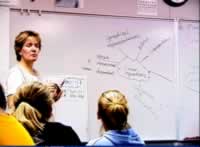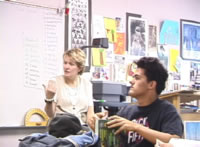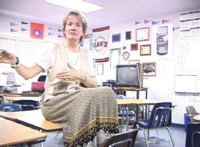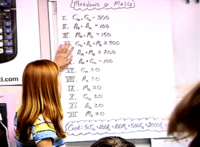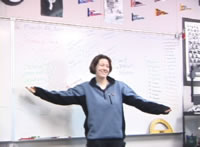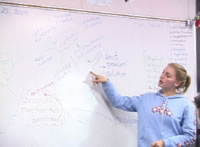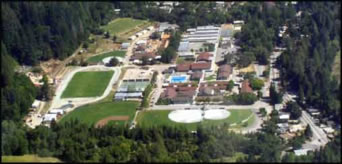My Context
About Me • About
My Students • About
My School
About Me (pdf version)
I have been teaching for 26 years-- 20 of those at San Lorenzo Valley High School.
I am here at Carnegie continuing on a long journey in mathematics teaching and learning that began in 1975. Along the way I became a National Board Certified Teacher in Adolescent and Young Adulthood Mathematics, a Presidential Awardee for Excellence in Mathematics Teaching, an author on two mathematics textbook series, an instructor with the California Mathematics Project, a presenter at local, state, and national mathematics conferences, and a member of the state board of the California Mathematics Council.
This journey to love learning mathematics began in the 1960s when I had the fortune of taking SMSG (School Mathematics Study Group) - the reform math of that time. Since then I have grown accustomed to learning new ways of teaching mathematics each year and tweaking them along the way. I am always in search of the best way to reach ALL STUDENTS and have them appreciate the beauty, power, and usability of mathematics in their lives.
Not until I began observing math classroom teaching throughout California, as the evaluator for an NSF K-12 math staff development project, did I begin to realize how differently I orchestrate my classroom. Most of the time I do not present information in a lecture, followed by questions of me, and class practice problems. Instead, my students work in groups or by themselves come to the board and present their ideas/work on either homework, or group problems, and explain their thinking. They then answer questions or further discuss the situation posed by their peers or answer extension questions posed by me.
During the first ten years of my teaching career, I modeled in the classroom what was modeled for me growing up. Students would put on the board the correct answers to math problems. The teacher's job was then to explain what those students had done. Where was the value of student explanation? Students who had gotten the same correct answers were now free to tune out. Gone was the chance to see alternative methods of solution. Also gone was the chance to understand where student misconceptions were occurring, and have peers follow each other's thought processes. What was illustrated for students was that teachers had the knowledge and the best way to explain it to the students!
Going up the board and explaining one's thinking is a very important part of my classroom culture. It is very hard for teenagers not to feel the peer pressure of "getting the correct answer.” Public speaking is hard for adults, let alone teenagers. Should mathematics class be immune to this kind of learning? Public discourse is a huge part of the mathematics learning in my classroom culture. It needs to be introduced this first day of class.
About My Students
The students in the video are taking IMP 3, the third year of the college-preparatory mathematics Interactive Mathematics Program. There are 28 students in this class, which is made up of freshman through seniors. IMP uses an integrated mathematics curriculum. The IMP 3 students in the video are working towards solving a system of 12 equations in 6 variables.
About This Class Session: March 23, 2004
Since my school is on a block schedule, each of my math classes is 2 hours long. It is important, therefore, that each class period be broken down into different learning modalities for the students. The video from which this clip was taken consists of three different learning activities. In the first section, students are backwards mapping this 8-week unit, reflecting on the journey we have taken in order to have the skills and tools necessary to solve the unit problem. During the second part of the period, students are using logic in order to eliminate some of our constraints and simplify the work that they must do begin the solution.
About My School
San Lorenzo Valley High School (SLVHS) sits among the redwoods of the Santa Cruz Mountains. Students mostly come from the communities of Felton, Ben Lomond, and Boulder Creek. While the school is not ethnically diverse, it certainly is economically diverse. SLVHS is the only high school in the San Lorenzo Valley Unified School District, which also includes 2 elementary school, 1 junior high, charter schools, and homeschool programs. Due to a lack of adequate state funding, the district recently closed two additional elementary schools.
More than ten years ago, this innovative high school adopted a block schedule for all classes. On Mondays of most weeks, students attend all 6 classes for 55 minutes. On Tuesdays and Thursdays, students attend their odd numbered period classes for 2 hours, and on Wednesdays and Fridays, they similarly attend even period classes.
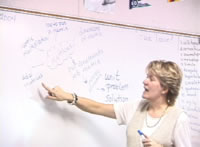 Learning Mathematics
Learning Mathematics 